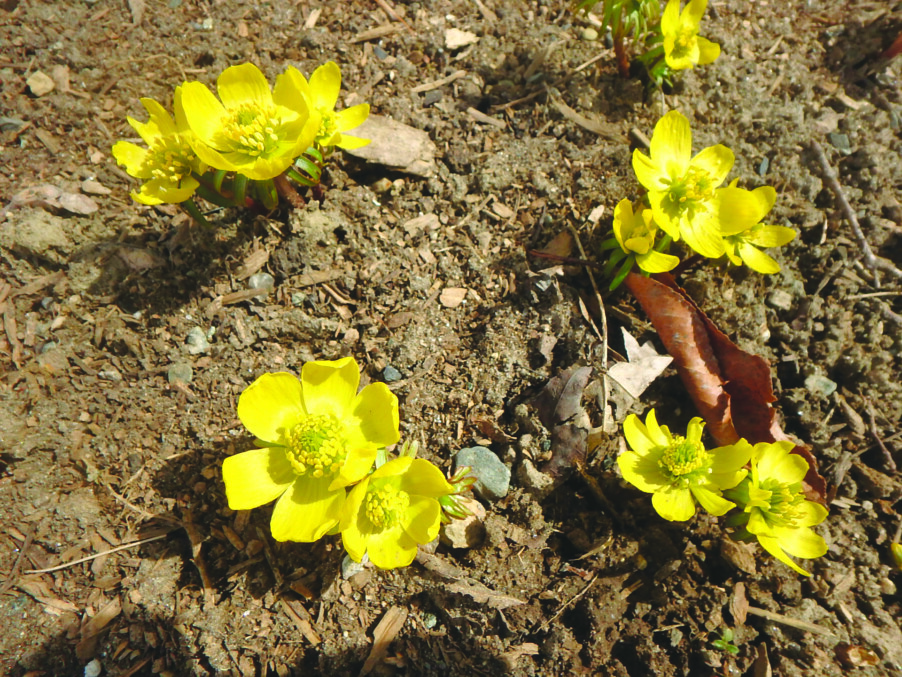Buy less plastic, stay away from chemical fertilizers and compost
Do you want to be a better steward of the environment? If so, the first step is to be a gardener: Grow some of your own vegetables and plant some native trees, shrubs and flowers while using no chemicals. But there is even more to think about than what kind of tomatoes to plant, and how many.
First, what should you do with all those black plastic pots that come with the plants? Most recycling facilities do not accept black plastic pots, but some pots are numbered #2 or #5 and can be recycled. A few have no numbers. Plastic pots are made from oil in factories around the world. I imagine that these factories spew and spill a certain amount of chemicals, and create waste and byproducts that are bad for the environment.
My mantra for plastic is this: Refuse, Re-use, Recycle. So how do you refuse to buy plants in plastic pots? Start your own plants. If you save plastic pots and rinse them out, you can reuse them. Some for years. You can also buy peat pots and coir (palm fiber) pots. Some companies, like Gardener’s Supply, sell sturdy flats to use instead of those flimsy six-packs, strong enough to be used many times.
Trees and shrubs are most often sold in big black plastic pots. But they are also sold “balled and burlapped.” Those are usually bigger trees that are dug up and wrapped in burlap after years growing in the ground. Some local nurseries still dig their own plants, and I recommend supporting them. When you plant, be sure to take off any burlap and wires that may be holding the root ball together. And beware of any “fake” burlap made of plastic. Don’t buy it.
For years we have been offering sturdy plastic pots to our local, family-owned garden centers. Most just want them cleaned before you drop them off. I find it easiest to do that right after planting, before the soil bakes on. Reusing pots saves the garden centers money, assuming they have the time to sort and store them. Tell those that do how happy you are with them.
Recycling is really not the answer: Many loads of plastic at the recycling center are contaminated and end up in the landfill or incinerator. Too much dirt, food or items of the wrong number can condemn a whole Dumpster of plastic.
I was pleased to learn that most Home Depot stores now accept all kinds of plastic pots. I went to the one near me in West Lebanon, New Hampshire, and there was a rack outside with the plants just for returned pots. The pots don’t even need to have come from them.
We recently took a big step forward toward being “green.” We bought an electric lawn mower. I’ve read that the EPA estimates that using a lawn mower is 11 times more polluting than driving a new car. One hour of mowing, apparently, is equal to driving 93 miles. Of course, these statistics are not perfect, as they do not indicate what kind of mower or car is being compared. Older, bigger mowers are worse.
We bought a 21-inch, self-propelled battery-powered lawn mower on sale for $500 at our local True Value Hardware store. It has a quick-charge battery charger that takes an hour or less to recharge the 54-volt battery, which is good for an hour of mowing. The mower has plenty of power and is so much quieter than our old gas mower. Our lawn takes more than an hour to mow, but so what? I have plenty of other garden chores to do while the battery recharges. The technology in batteries in electric mowers really has improved just in the last few years.
Being green also means using no chemicals in the garden. That’s an easy one. I don’t use herbicides, insecticides or chemical fertilizers. I don’t want something to kill dandelions or moss, neither of which I consider a problem.
There are perfectly wonderful organic fertilizers that offer so much more than the chemical ones. Instead of just offering three plant nutrients (nitrogen, phosphorus, potassium), they offer calcium, magnesium and many more nutrients plants use. They do this because they are manufactured using natural ingredients like seaweed, cottonseed meal, ground oyster shells and ground peanut hulls.
Organic fertilizers are also slow-release fertilizers. Pro-Gro, made in Vermont, has about 25 percent soluble nitrogen that is ready right away. The rest is released slowly as microorganisms break it down and make it usable by plants. And it will not damage root hairs the way some of the chemical fertilizers can if too much is applied.
Compost is one of the best things you can add to your soil. It helps sandy soils hold moisture and loosens up heavy clay-based soils. You can buy it by the bag or, better yet, by the truck load. Even though my soil is terrific, I add compost every year. It is not a fertilizer, but it feeds the microorganisms that work with our plants. And if you get a good grade of compost, it will improve the texture of your soil, no matter what it is.
Lastly, speak up. If your suppliers are trying to reduce use of plastic, or are taking it back to reuse it, tell them that is why you are buying from them. If they’re not? Ask them to! Every voice counts. We gardeners should be on the cutting edge of reducing plastic and chemical use.
Featured photo: Electric mowers have improved greatly in the past few years. They are quiet and non-polluting. Photo by Henry Homeyer.






